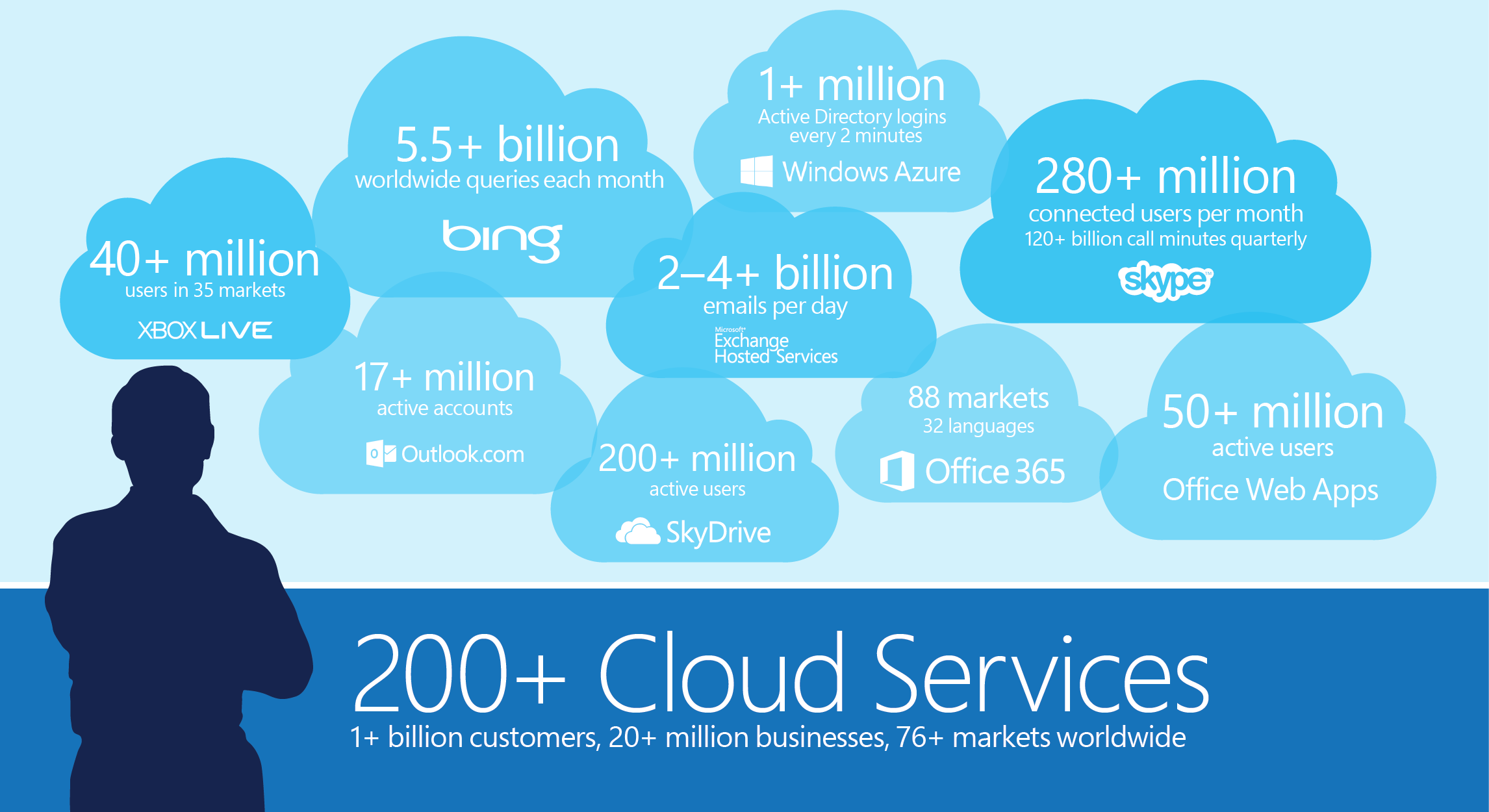You may have come across several articles in the past about how Amazon is trying to achieve global domination. The way the company has gone about its business, disrupting the retail industry in United States, swiftly moving into all the top ten economies of the world and a few more, and continually growing its revenues at double digit rates despite making more than $100 billion dollars a year. Does it look at all like they are on an unstoppable roll?
But this article is not about Amazon. It’s about Microsoft. Surprise! It’s about how much the company has changed in the past few years, and how, little by little, their plan to dominate the enterprise market around the world is taking shape.
Microsoft in its previous avatar did Windows, and then some. When Satya Nadella took over as CEO, their strategic focus shifted towards cloud and mobile. In cloud, there were two areas that held their focus: on the Infrastructure as a Service side, it was Microsoft Azure; and in Software as a Service it was Office 365.
The decision to take the SaaS plunge must have been huge one for Microsoft, because the Redmont giant already had a huge customer base that paid annual licensing fees for Microsoft Office applications. In fact, a lot of companies around the world still use the standalone Office suite. The problem for Office 365 was that, if it grew, it would cannibalize Microsoft Office. At best, it would be a replacement income, with the downside of having to built a new offering on the cloud.
That’s the situation they were in at the time. But they did what other companies refused to do.
Case in point is Oracle, which refused to enter the cloud computing segment for a long time because it knew that it will hit its own existing user base. However, the growth of the cloud computing industry forced its hand and made it take the plunge anyway. And anyone following Oracle knows that it is still paying the price for being late to the cloud computing party.
Microsoft, on the other hand, took the risk and made a huge bet, saying that SaaS is the future and we would rather grow Office 365 instead of holding on to Microsoft Office. That risk has paid off handsomely for the company, and they now have 85 million monthly active users for Office 365, and it’s still growing at double-digit rates.
As Office 365 kept moving up the charts, Microsoft has been slowly adding muscle to Dynamics 365, an enterprise management software application that covers the tens of billions of dollars worth Customer Relationship Management and Enterprise Resource Planning segments.
Admittedly, Microsoft is still behind Salesforce and Oracle in these segments, but the Windows maker has decided to give them a serious run for their money as it gears up for a prolonged battle with them in the enterprise management software space.
Meanwhile, the LinkedIn acquisition was a major trump card that Microsoft purchased, and it’s starting to to show signs of strong support for the companies plan to go after the CRM market and the enterprise software segment in general. As the world’s leading professional network with more than 450 million users, it’s quite possible that most of the world’s enterprises are already on LinkedIn, and this was Microsoft’s doorway to access them.
And then there is Microsoft Azure, which has been growing at near triple digit speeds for the past several quarters. No one on the outside knows exactly how much money Microsoft Azure brings in for the company, but the rate of growth is a clear indication that customers are finding value in their product. Just for comparison’s sake, Oracle reported 2% growth from its IaaS segment during the most recent quarter, Amazon Web Services revenues grew 47%, while Microsoft Azure grew by 93%.
Now line them all up – Microsoft Azure for your IT infrastructure, Office 365 with applications like Skype and Microsoft Teams to address your software needs for internal operations, Dynamics 365 to help you manage sales, customer relations, resource planning and so on, and Linkedin for your professional networking needs. That pretty much covers all the software a company would ever need, irrespective of the size. Granted, there will be specific niche software applications that companies might need, but Microsoft’s lineup will cover most of your needs as a company. More specifically, an enterprise-level organization.
There is no other company in the world that has the breadth and depth of enterprise software offerings that Microsoft does, and that’s exactly what will take them to that sweet spot of being the dominant technological resource provider to big and small companies all over the globe.
Thanks for reading our work! We invite you to check out our Essentials of Cloud Computing page, which covers the basics of cloud computing, its components, various deployment models, historical, current and forecast data for the cloud computing industry, and even a glossary of cloud computing terms.



